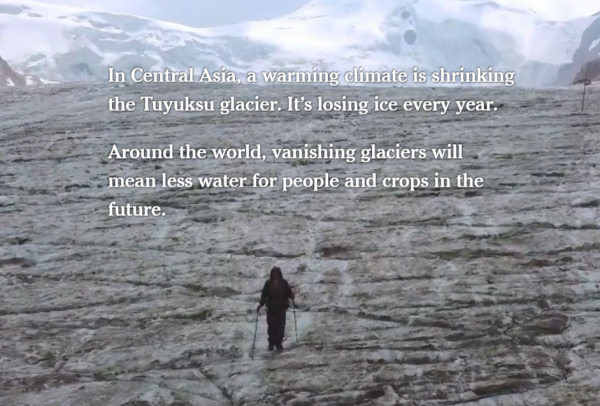Glacier Logic

02/19/2019 16:30 - Posted by Tom van Leeuwen
Last month, the New York Times website published a page titled
"Glaciers Are Retreating. Millions Rely on Their Water." It shows a dramatic image, zooming out of a person walking down a dry glacier bed with the following text:
"In Central Asia, a warming climate is shrinking the Tuyuksu glacier. It’s losing ice every year.
Around the world, vanishing glaciers will mean less water for people and crops in the future."
This time, we won't dive into the question of whether glaciers are shrinking or growing. It's clear that glaciers are dynamic systems and that the climate that surrounds them always changes. Some will shrink while
others might grow.
What the NYT is trying to make us believe is
one of the most persistent myths about climate and Global Warming.
Myth:
"Shrinking glaciers mean future generations will have less water available."
Analyzing the myth
Water that's been frozen into a glacier can't be used by people. It first has to melt and flow down the mountain in order to be used. So,
the very process that makes glacier water available will make the glacier disappear!
This myth makes you
fear something that at the same time is what you
desire to happen. You fear that the glacier disappears and at the same time you desire the glacier to disappear because you want the water to be available for people and crops. This is a perfect example of the classic saying:
"you can't have your cake and eat it."
The only valid relation between glacier size and water availability is
the larger the glacier, the less water available because the water that's frozen into the glacier is
not available. So, that turns the myth around!
Water availability depends on the amount of precipitation. Not on the glacier size! Glaciers only form a buffer that retains or releases water into the valleys according to the glacier temperature.
Myth busted!
Tom van Leeuwen, February 2019.
